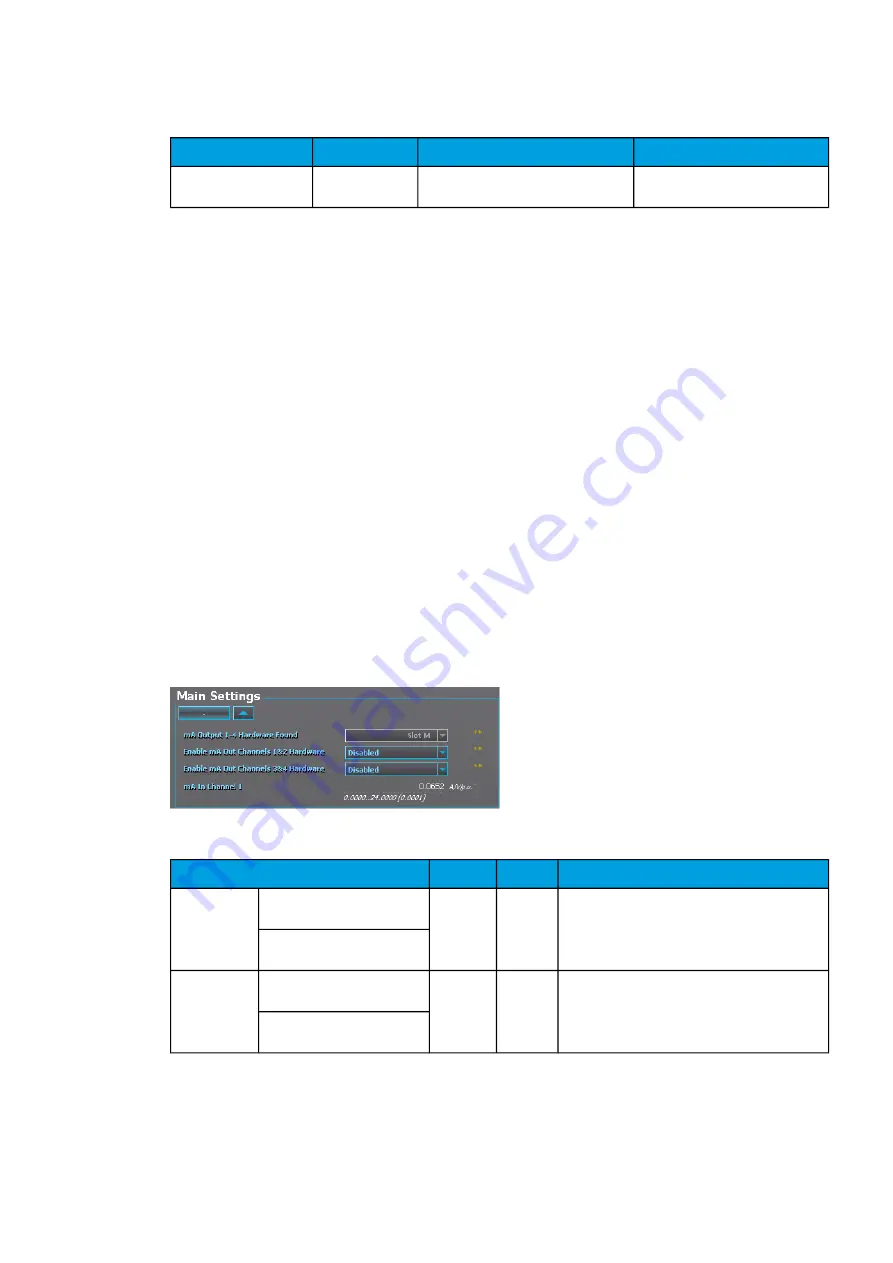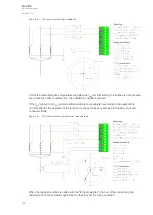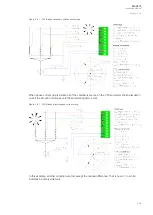
Table. 5.4.4 - 160. Register content.
Date and time
Event code
SOTF remaining time
SOTF been active time
dd.mm.yyyy
hh:mm:ss.mss
3904...3911
Descr.
The time remaining of the set release
time.
The time the function has been
active.
5.4.5 Milliampere output control
The milliamp current loop is the prevailing process control signal in many industries. It is an ideal
method of transferring process information because a current does not change as it travels from a
transmitter to a receiver. It is also much more simple and cost-effective.
The benefits of 4...20 mA loops:
• the dominant standard in many industries
• the simplest option to connect and configure
• uses less wiring and connections than other signals, thus greatly reducing initial setup costs
• good for travelling long distances, as current does not degrade over long connections like
voltage does
• less sensitive to background electrical noise
• detects a fault in the system incredibly easily since 4 mA is equal to 0 % output.
Milliampere (mA) outputs
AQ-200 series supports up to two (2) independent mA option cards. Each card has four (4) mA output
channels and one (1) mA input channel. If the device has an mA option card, enable mA outputs at
Control
→
Device IO
→
mA outputs. The outputs are activated in groups of two: channels 1 and 2 are
activated together, as are channels 3 and 4 (see the image below).
Figure. 5.4.5 - 151. Activating mA output channels.
Table. 5.4.5 - 161. Main settings (output channels).
Name
Range
Default
Description
mA option
card 1
Enable mA output channels 1
and 2
0:
Disabled
1: Enabled
0:
Disabled
Enables and disables the outputs of the mA output
card 1.
Enable mA output channels 3
and 4
mA option
card 2
Enable mA output channels 5
and 6
0:
Disabled
1: Enabled
0:
Disabled
Enables and disables the outputs of the mA output
card 2.
Enable mA output channels 7
and 8
A
AQ
Q-C213
-C213
Instruction manual
Version: 2.04
241
















































